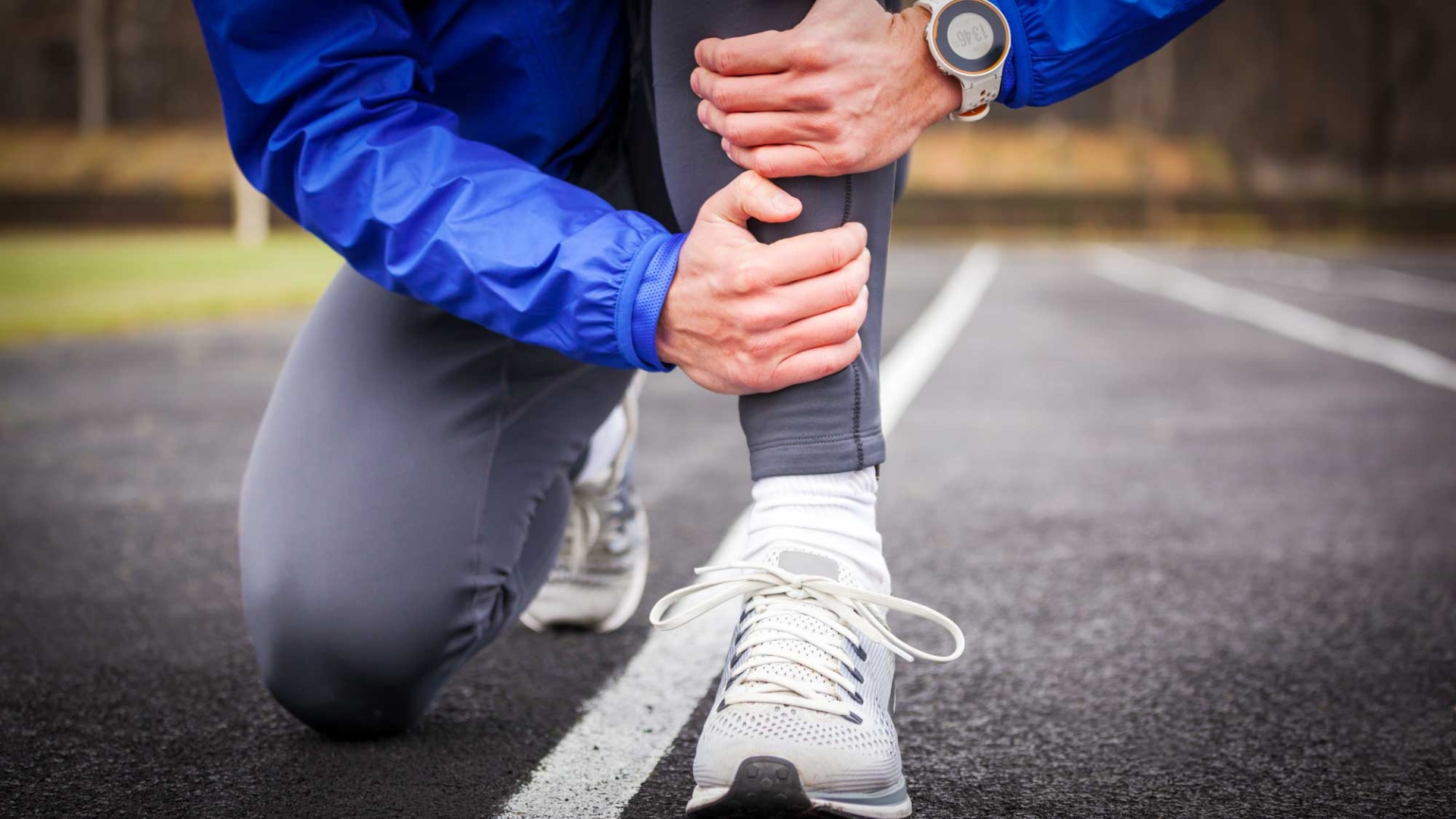Common Running Injuries and How to Prevent Them

Running is a great form of exercise, but new runners are especially prone to injury. Learn about these common running injuries.
Although it is said that up to 50% of new runners will get injured, it is possible to prevent common running injuries with some time and attention spent on stretching and strengthening. Having good flexibility at your hip, ankle and foot as well as good hip strength is important in injury prevention. Learning good running mechanics and wearing the right running shoes can also make a big difference when it comes to injury prevention, so you are not sidelined during your training cycle due to one of the following injuries.
Achilles tendonitis
To prevent Achilles tendonitis, stretch and strengthen your ankle’s tendons. A simple standing calf stretch can assist you in having enough motion at the ankle to prevent increased load on your Achilles. Stand on a step and let your heels lower toward the floor keeping your knees straight to stretch your calves post-run for two minutes. To strengthen the calves, you can perform heel raises coming up onto your toes with both feet and then taking one foot away then slowly lowering your heel down repeating until you get that nice burn of fatigue in your calf muscle.
Hamstring injuries
Sudden pain in the muscles in the backs of your thighs may mean you may have a pulled hamstring. A pulled hamstring needs months of rest to heal. Prevent a pulled hamstring and other leg muscle strains by doing the bridge exercise, a strengthening exercise that isolates and strengthens your gluteus muscles and hamstrings. Lie on your back with your knees bent. Push your hips up using the force of your feet to create a bridge. Hold the position briefly and come down. You can also work on hamstring strength using furniture sliders. Come up into the bridge position as instructed above, but this time have your heels on to furniture sliders. Once you are up in the bridge position, you will straighten your knees slowly until your legs are straight and lower your buttocks to the floor. Now bend your knees with your feet on the sliders and you’re ready to repeat the exercise.
Plantar fasciitis
Plantar fasciitis is heel pain that hurts even when you’re lying down. It’s one of the most common running injuries for the foot. Plantar fasciitis is caused by your calf being too tight which then causes compensation at your foot and ankle. The best prevention is to stretch your calves as above and be sure to change to new shoes as they wear out during a training cycle. Wearing recovery sandals around the house after long training runs can be helpful as well.
Runner’s knee
This is an overuse injury involving the knee cap. This is usually caused by weakness in the hips which allows the knee to collapse during running, or the knee is translating forward past your toe during running. The bridge exercise as well as side leg raises to strengthen your glutes can help prevent some of the mechanical faults described. To perform the side-lying leg raise, lay on your side and raise your top leg keeping your heel in contact with the wall then return the leg down to its starting position. Repeat until you feel the burn of fatigue in the muscle at the top of your buttock.
Shin splints
Runners often get shin splints — an injury that causes pain that runs down the front of your lower leg. It can happen if you ramp up your mileage too quickly or after running your long run. Prevent shin splits by gradually increasing your running time so you allow your body to adapt. Increasing the number of steps you take when running to help get your foot down closer to your body to reduce loads on your shin bone can help too.
If you are experiencing pain that is greater than 3/10, pain is waking you at night or if the pain has persisted for more than 7 days, the Mercy Health Orthopedic and Sports Medicine Team are here to help. Find a doctor near you today.

